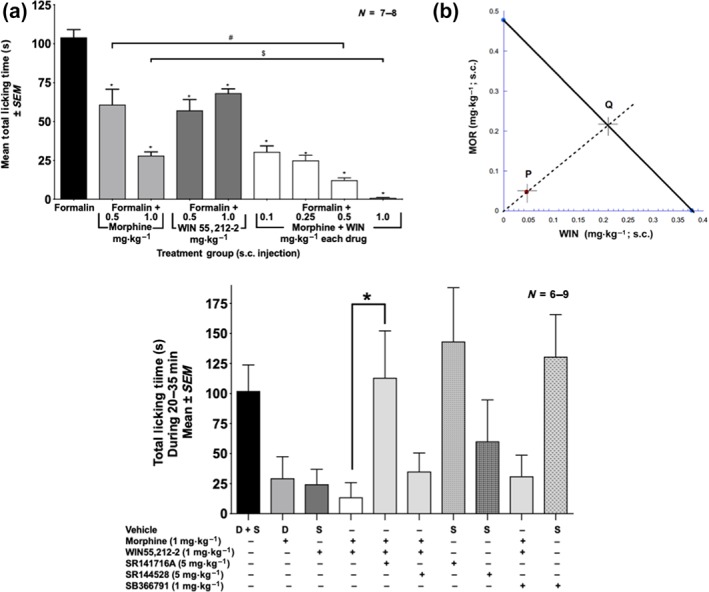Figure 2.

Effect of morphine alone, WIN alone, and the combination of WIN plus morphine on formalin‐induced nociception in mice. Mice received a formalin injection into the paw and either subcutaneously morphine, WIN, or combinations of morphine plus WIN. Formalin control mice received subcutaneously saline (vehicle for morphine) or 5% DMSO (vehicle for WIN) or a saline injection and a 5% DMSO injection. Values for all three vehicle controls were averaged. (a) Data are the mean paw licking time (seconds) ± SEM of treated mice. *P<.05, significantly different from formalin alone; #P<.05, significantly different as indicated; $ P<.05, significantly different as indicated; one‐way ANOVA with Sidak's multiple comparisons test. (b) Isobolographic analysis to determine synergism between morphine and WIN. The 1:1 ratio of WIN:morphine produced the half maximal effect shown here as point P. The expected additive point is shown as Q. (c) Effect of antagonists (SR141716A [CB1 receptor antagonist], SR144528 [CB2 receptor antagonist], and SB366791 [TRPV1 channel antagonist]) on licking time produced by the morphine plus WIN combination. D, DMSO; S, saline. *P < .05, significantly different as indicated; one‐way ANOVA followed by Sidak's multiple comparison test between the groups
